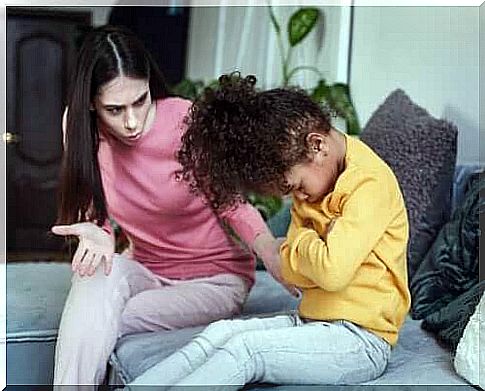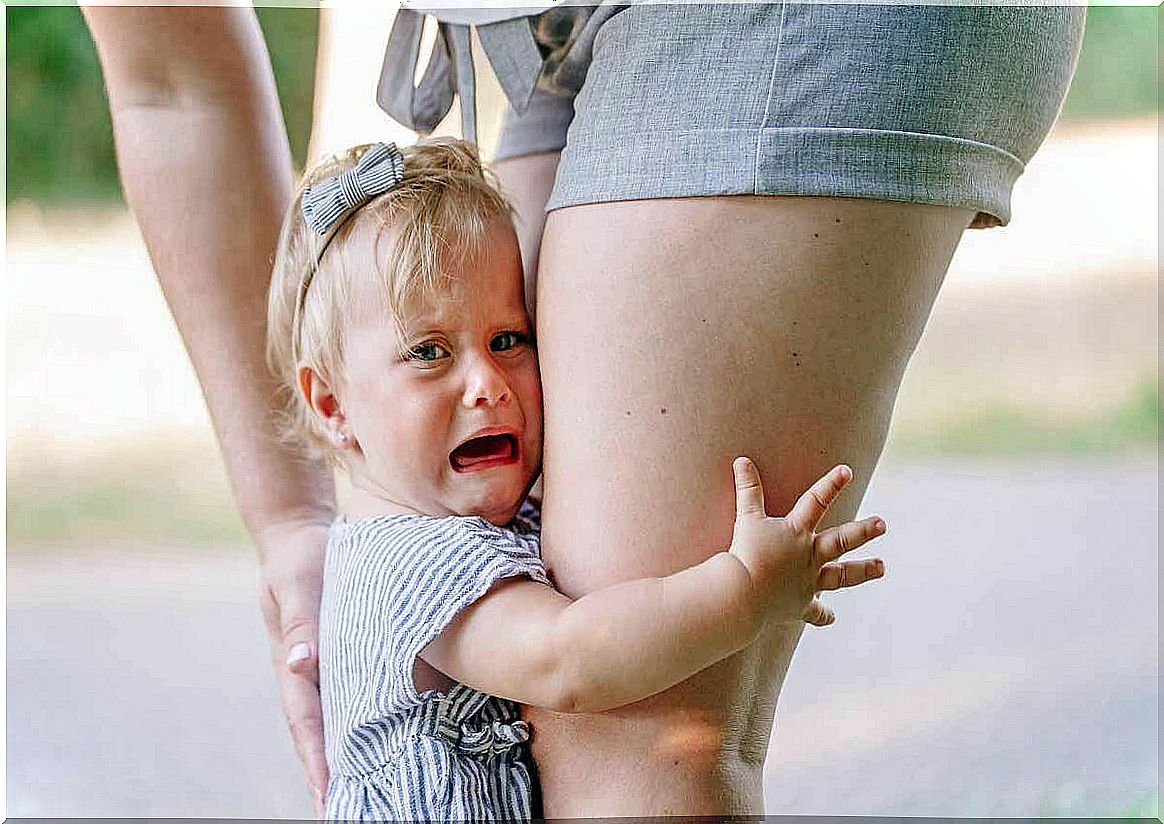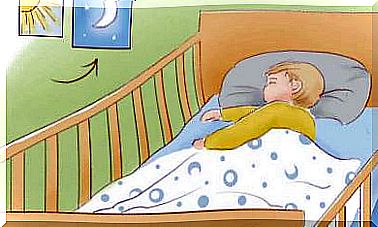Reluctant Attachment: What Is It And What Are Its Consequences?

Have you ever heard of reluctant attachment?
First of all, it is worth remembering that attachment is the affective and emotional bond that is established between an infant and its caregiver, or between one person and another.
It is characterized by a search for closeness, support and intimate interaction. It tends to develop from an early age.
Based on research (Bowlby, Ainsworth, Main, as main references), it was determined that attachment has an impact on the image that a person has about themselves. It also affects the image of the attachment figure and about the relationship itself. These are the so-called “active internal models”, which then tend to be transferred to other relationships. When the relationship is well established, feelings of trust and security develop. Then the person about empathy, communication and self-esteem.
However, it does not always go that way and may have weak foundations. As a result, relationships become unstable or conflict-filled.
Let’s see what reluctant attachment is.
Reluctant attachment theory
Based on research conducted in the “foreign situation” by Ainsworth, researchers discovered different types of attachment. Among them we find confident, insecure-avoidant and insecure reluctant. In addition, later research by Main and Solomon identified a fourth type, which is disorganized affiliation.
When it comes to secure attachment, it occurs in situations where children seek contact with the caregiver, can express discomfort and distress, and at the same time resume their exploratory activity.
Reluctant attachment refers to cases where the behavior is ambiguous. There is interest in resuming contact, while the person avoids it when it appears. There is a tension between closeness and resistance.
When it comes to the associated attachment pattern, the child does not seem to feel worried and rejects the caregiver when they show up.
Examples of reluctant attachment
Some behaviors where we can detect reluctant attachment are situations where the child feels insecure in the absence of the caregiver, but when the caregiver returns, they approach as well as reject them.
In adult cases, it is reflected in relationships where there is “back and forth” or interest, but also rejection. In the same way, there is a demand for contact, attention and closeness, and when one of the members does not have it, it tries to make the other feel guilty.

Reasons for reluctant attachment
To understand the causes of this form of attachment, we must think beyond individual and relational levels. This is because cohesive elements also contribute.
Experts say, for example, that the basis for reluctant attachment has to do with the inconsistency or unavailability of the caregiver’s response to the child’s demands.
When the explanation only focuses on this aspect, it seems to be responsible and blame. However, it is also necessary to analyze the conditions and obstacles to establish healthy connections. We must not lose sight of the influence of the various systems and contexts.
What characterizes reluctant attachment?
In reluctant attachment, the typical behavior is that children are anxious and insecure in the presence of strangers. In fact, they may even cry. But when the parents return, they find no comfort. The grief continues, and they have a fluctuating behavior between approach, distancing and rejection.
The child interprets the bond as varying, and this creates uncertainty. They understand that sometimes they get attention and sometimes not. The problem is the uncertainty of not knowing when. Inconsistency can be the word that sums up this type of affiliation.
What are the consequences of reluctant attachment?
The most important starting point for attachment theory is that it defines the basis for what future relationships will be. In the meantime, it has an impact on the personal level, as well as on issues such as self-esteem and security.
Various authors emphasize that there is a correspondence between adults’ relationship experiences and attachment theory. Therefore, specialists from this idea believe that those who have a reluctant style are adults who are insecure, suspicious, afraid of being abandoned, and who find it difficult to commit to relationships.
Some studies even mention the presence of hypervigilant behavior. They also report the presence of anxiety, a strong need for closeness and fear of rejection and separation. Garrido (2006) mentions that people with reluctant attachment report a high degree of negative influence, with discomfort and anger.
Is there any treatment?
Given that attachment is related to parents ‘and caregivers’ ability to read children’s needs, research suggests actions related to sensitivity, especially in early childhood.
On the other hand, specialists must work with adults with attachment difficulties (reluctant, disorganized or avoidable). This is especially true in cases of mental health problems. Specialists recommend this for the second stage.
First, it is about intervening in specific issues, which are more sensitive to change. Then into deeper and more far-reaching issues, which require more time to address.
When the situation is already present, specialists recommend psychological therapy. In these cases, they work a lot with individual pages. Important aspects are self-esteem, security, trust, emotional dependence and also relationship patterns.
Depending on the size of the situation, it can be approximated from the trauma theory, especially if violent situations have emerged.

Secure affiliation is always a protective factor
It is important to remember that the quality of the connection is what influences the development of children. Like any bond, it is the construction, the time, the subsequent approaches and the contacts that favor the knowledge and understanding of what the others need.
Secure attachment will always be a protective factor for different life situations. However, we must also consider that this is not completely isolated.
Therefore, it is always necessary to ask oneself about the conditions that affect the development, or the maintenance of a particular type of connection. In the answers, you can discover that economic and social conditions often have a great influence.
As Bowlby said:
Thinking about attachment therefore also involves a caregiver who follows through resources such as parent education programs, reconciliation policy, family support and employees, among other measures.









